Manufacturing management software helps businesses plan, track, and control production, inventory, and workforce operations.
Managing production, inventory, and teams with spreadsheets or paperwork can lead to delays, errors, and wasted time. It’s frustrating when things slip through the cracks on the shop floor and across the manufacturing lifecycle.
That’s where manufacturing management software comes in—it helps you stay organized, track everything in one place, and keep your operations running smoothly.
In this article, I compare the top 5 manufacturing operations management software to help you find the best.
Our Top Picks
-
1
Best all-in-one manufacturing management software for mobile-first workforce management
-
2

Good for small manufacturers needing affordable MRP
-
3

Good for modular, open-source manufacturing solutions
Why trust us?
Our team of unbiased software reviewers follows strict editorial guidelines, and our methodology is clear and open to everyone.
See our complete methodology
What to Look For in a Manufacturing Management Software
Must-have core features
I looked for tools that are practical for small to mid-sized manufacturers and support at least 1 core area of the manufacturing lifecycle, such as:
- Production planning: Tools that help organize what to produce, when, and in what quantity.
- Inventory control: Ability to track raw materials, parts, and finished goods.
- Job scheduling: Functionality for assigning and managing shifts, work orders, or production jobs.
- Workforce management: Ability to handle time tracking, task assignments, and employee communication.
- Quality control: Support for inspections, checklists, and consistent operational procedures.
- Cost tracking: Visibility into production-related costs like labor and materials.
Usability features
- User-friendly interface: Easy to learn and use, with clear menus and simple navigation.
- Mobile accessibility: Can be used on phones or tablets around the factory floor.
- Affordable pricing: Offers good value for small and medium-sized businesses without breaking the budget.
Additional features that make these tools great
- Real-time visibility: See what’s happening on the floor as it unfolds.
- Data-driven insights: Track trends and improve decision-making.
- Document management: Store and share SOPs, safety protocols, and equipment manuals.
The 5 Best Manufacturing Management Softwares of 2025
-
Connecteam — Best all-in-one manufacturing management software for mobile-first workforce management

Connecteam is a mobile-first workforce management platform built for managing operations, scheduling, and communications in deskless industries like manufacturing.
Why I chose Connecteam: It’s built for managing mobile, shift-based teams—making it a natural fit for manufacturers who must organize people, track time, assign tasks, and enforce processes on the floor.
Shift scheduling and job assignment
With Connecteam, you can manage production floor coverage with drag-and-drop employee scheduling, recurring shift templates, and availability rules. I like how shifts can include workstation locations, shift notes (like machine assignments), and required certifications.
Job assignments can include instructions, attached SOPs, and time-sensitive tasks—useful for dispatching a technician to fix a conveyor belt or assigning a supervisor to a specific line.
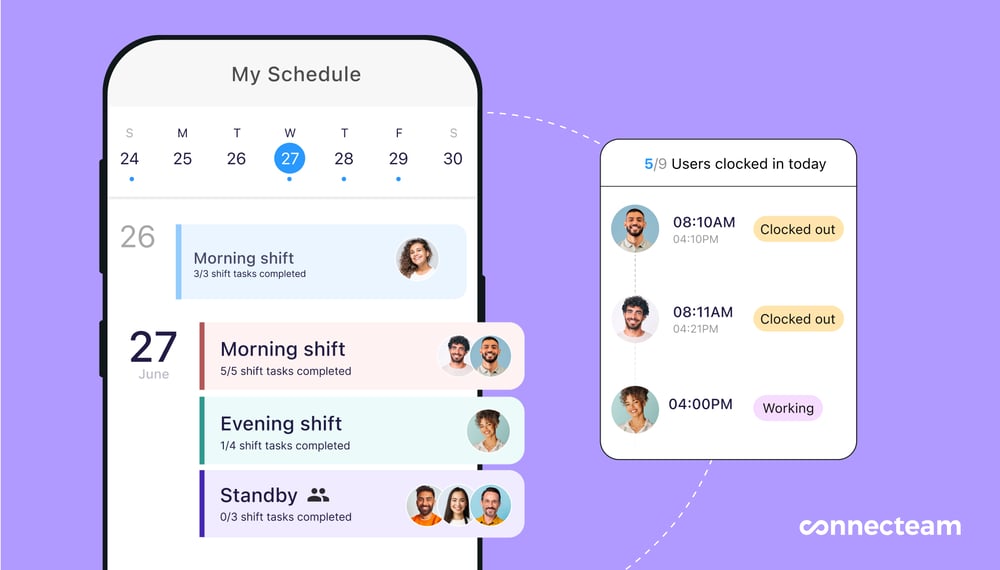
Real-time notifications keep teams updated, and the scheduling dashboard gives a clear view of shift gaps across departments or locations.
I love how Connecteam’s scheduling features simplify both planning and execution—critical for plants running multiple shifts or handling rapid production cycles.
Operational task tracking with built-in forms for quality and safety
Connecteam functions as a task management app: You can assign and monitor tasks tied to production, maintenance, or compliance—like machine inspections, quality checks, or shift changeovers—while attaching custom digital forms to ensure each step is followed correctly.

Tasks can include due dates, subtasks, file uploads, and photo evidence, while checklists help standardize processes and support data collection on the floor. I think this setup makes it easy to enforce safety routines and reduce the chance of missed steps.
Knowledge base
I appreciate that you can store and share SOPs, safety protocols, equipment manuals, and training guides in a company knowledge base. Plus, you can limit access to documents to specific roles or departments.
Files are organized in folders and are accessible from anywhere. I love how clean and searchable the document center is—it helps replace physical binders.
Internal communication
You can communicate through messages in an online team chat or announcements on a team-wide updates feed. Messages can go to individuals or specific departments. Plus, push notifications help you ensure critical updates are seen.
I liked how communications stay organized and don’t get lost like they do with WhatsApp or email chains.
Accurate time tracking with GPS for monitoring floor teams
You can track employee hours with a built-in GPS-enabled employee time clock. It’s ideal for monitoring shift workers across different zones or factory sites. It supports break and overtime tracking, a kiosk mode (for enabling workers to clock in using shared devices), and automated timesheets.

There are also GPS features, including geofences (digital boundaries that prevent workers from tracking time off the factory floor). I liked how these reduce time theft and improve accountability.
And so much more for comprehensive workforce management
Connecteam also supports structured training and onboarding modules, multi-location scheduling, real-time analytics to monitor workforce performance, and more.
Key Features
- Shift scheduling
- Task management
- Time tracking with GPS
- Digital forms and checklists
- Document center
- In-app chat
Pros
- Built for mobile-first, shift-based work
- Combines scheduling, tasks, and time tracking
- Super easy to train and onboard staff
- Suitable for businesses of all sizes
Cons
- Needs internet access
Pricing
Free-for-life plan availablePremium plans start at $29/month for 30 users
No strings attached - No credit card required
Try Connecteam Now -

MRPeasy — Good for small manufacturers needing affordable MRP
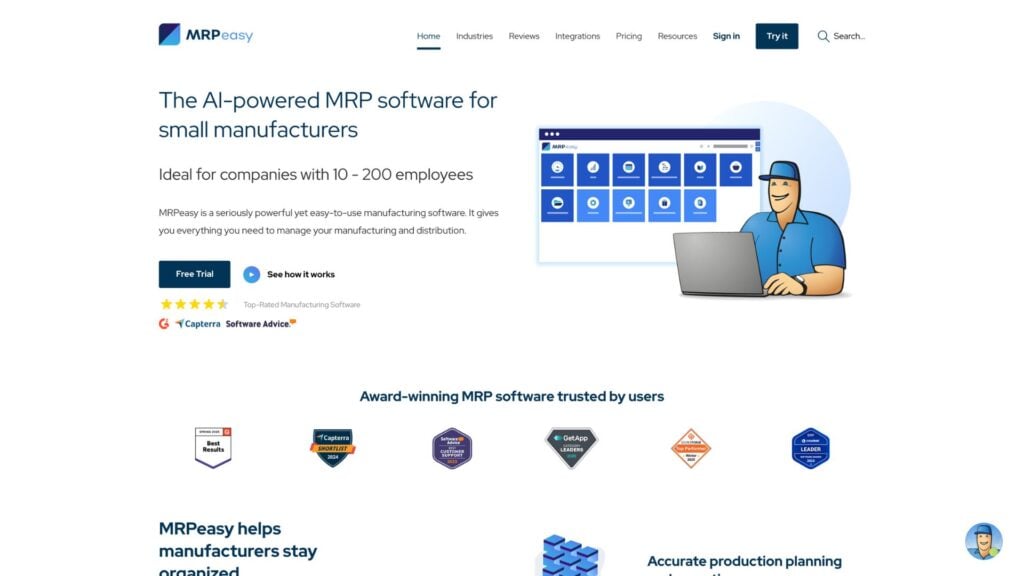
MRPeasy is a cloud-based manufacturing resource planning (MRP) software that covers production planning, inventory, CRM, and procurement.
Why I chose MRPeasy: It’s a manufacturing operations management (MOM) solution designed specifically for small manufacturers looking for an affordable, no-frills solution that handles both production and supply chain basics.
Production planning and scheduling
I found MRPeasy’s production planning module solid for basic needs. It auto-generates production schedules based on available resources and order deadlines, which saves manual input. The visual production calendar makes it easier to spot overloads or conflicts.
However, drag-and-drop isn’t supported, and the interface feels a bit stiff when shifting production dates.
Inventory management
MRPeasy offers multi-location inventory tracking, barcode scanning, and reordering rules, which is a plus. I like that the system automatically updates stock levels after production and sales—keeping numbers accurate.
You can also track lot and serial numbers, which is useful for compliance-heavy industries.
BOM and routing
The bill of materials (BOM) and routing system is clear and structured. You can build multi-level BOMs and define steps, workers, and workstations for each routing stage. This helps simulate costs and time required for jobs.
That said, the interface feels outdated in places and can be clunky during data entry. There’s a noticeable learning curve, especially if you’re unfamiliar with MRP systems.
What users say about MRPeasy
MRPeasy gives you one central repository for all your order and manufacturing information with cross referencing available from almost every page.
I would like to be able to customize more and have better visibility on open orders.
Key Features
- Production planning
- Inventory management
- BOM and routing
- Order management
Pros
- Clean logic between production, stock, and purchasing
- Supports barcode scanning
Cons
- Limited drag-and-drop scheduling features
- No native mobile app
Pricing
Starts at $44.92/month Trial: Yes — 30 days Free Plan: No
-

Odoo — Good for modular, open-source manufacturing solutions
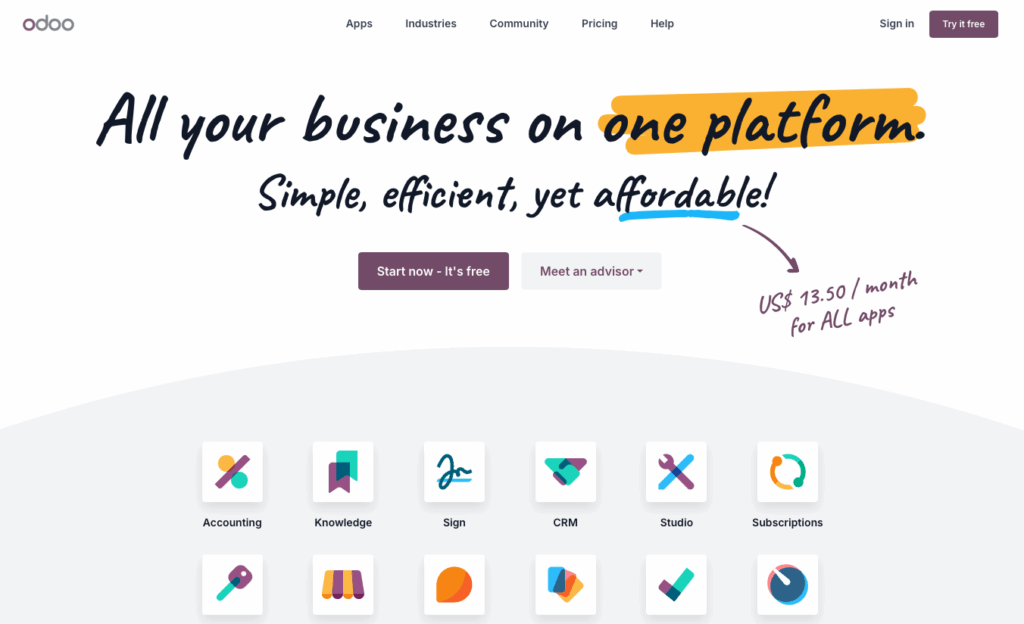
Odoo is a modular, open-source business management platform that includes apps for manufacturing, inventory, CRM, and accounting.
Why I chose Odoo: It’s flexible and divided into modules—ideal for manufacturers who want full control and customization without unnecessary extras.
Manufacturing module (MRP)
Odoo’s MRP module covers the basics and a bit more. You can create multi-level BOMs, generate work orders, and define routing for each operation. I loved the Work Center setup—it lets you assign tasks, track durations, and manage equipment availability. There’s also a nice visual Kanban view for managing production stages.
Inventory and warehouse management
Inventory is tightly integrated with manufacturing, which I found useful. Stock levels update automatically as production progresses. The system supports batch tracking, locations, zones, and expiration dates. I liked how easy setting up reordering rules was.
That said, the barcode scanning and mobile usability don’t feel smooth unless you use the paid Odoo barcode app. And the system occasionally feels sluggish when you’re loading stock transfers with lots of line items.
What users say about Odoo
The flexibility of the system allows us to tailor it to the needs of each of our businesses.
There aren’t as many resources to learn how to handle manufacturing custom products.
Key Features
- Manufacturing orders & BOMs
- Inventory sync
- Work center management
- Order routing
Pros
- Highly customizable
- Modular pricing and setup
Cons
- Can be overwhelming to configure
- Paid features add up
Pricing
Starts at $13.50/user/month Trial: Yes — 15 days Free Plan: Yes
-

Fishbowl — Good for inventory and production tracking
Available on
- Web
- iOS
- Android
- Windows
- Mac
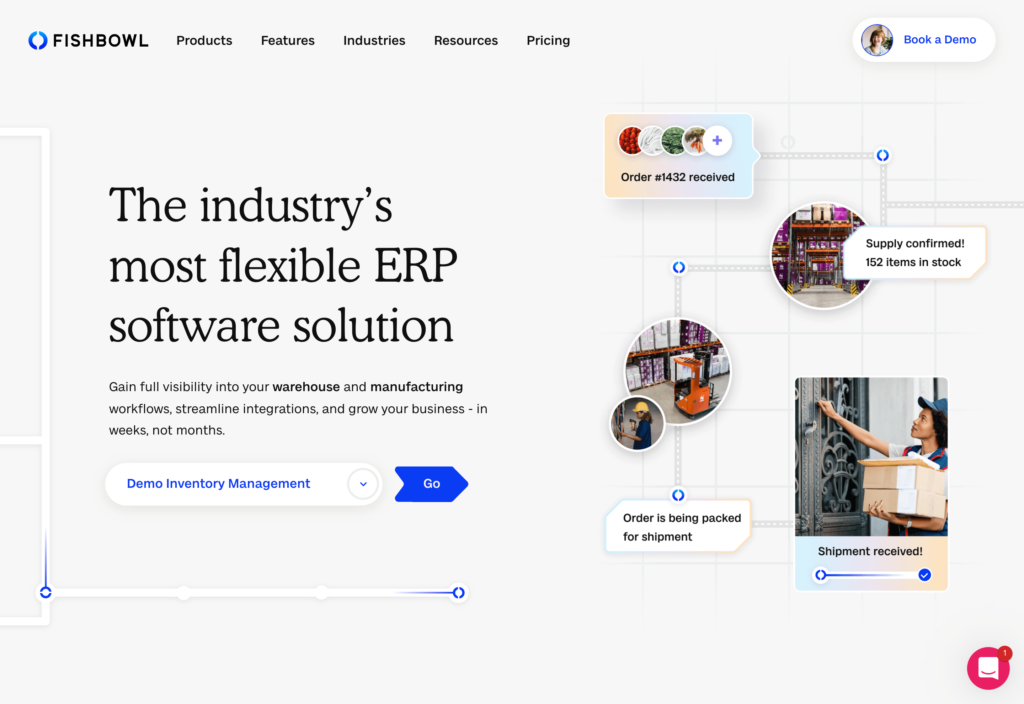
Fishbowl Manufacturing is an inventory-focused production management tool designed for small to mid-sized manufacturers.
Why I chose Fishbowl Manufacturing: It’s a solid fit for businesses that prioritize inventory and production tracking but don’t need a full ERP system.
Inventory control and tracking
Inventory is the core strength of Fishbowl. I found the part-tracking system reliable—it handles raw materials, finished goods, and work-in-progress across multiple locations.
Fishbowl also supports serial, lot, and expiration tracking, which makes it suitable for industries like food, medical, and electronics. It enables barcode scanning and real-time updates, too.
Work orders and production
Fishbowl lets you create and manage simple or multi-level work orders. I appreciate how it auto-generates work orders based on sales or inventory levels. You can also split work orders into stages and assign them to specific workers or machines.
Order management and fulfillment
Fishbowl helps track customer orders from quote to delivery. I liked that it offers shipping label generation and order status updates. It also lets you handle drop shipping and partial orders.
But I found that the order screen layout isn’t very modern, and reporting options for fulfillment performance are fairly basic unless you export data and use Excel or Power BI.
Also, cloud hosting is an add-on, which might be a drawback for teams needing remote access.
What users say about Fishbowl Manufacturing
I like the way you can have multi layers of Bill of materials.
Biggest downside was the learning curve.
Key Features
- Inventory tracking
- Work order management
- Barcode scanning
- Sales and purchase order handling
Pros
- Syncs well with QuickBooks
- Handles lot and serial tracking
Cons
- Limited reporting options
- Not cloud-native by default
Pricing
Contact vendor for price Trial: Yes Free Plan: No
-

NetSuite — Good for comprehensive ERP and manufacturing operations
Available on
- Web
- iOS
- Android
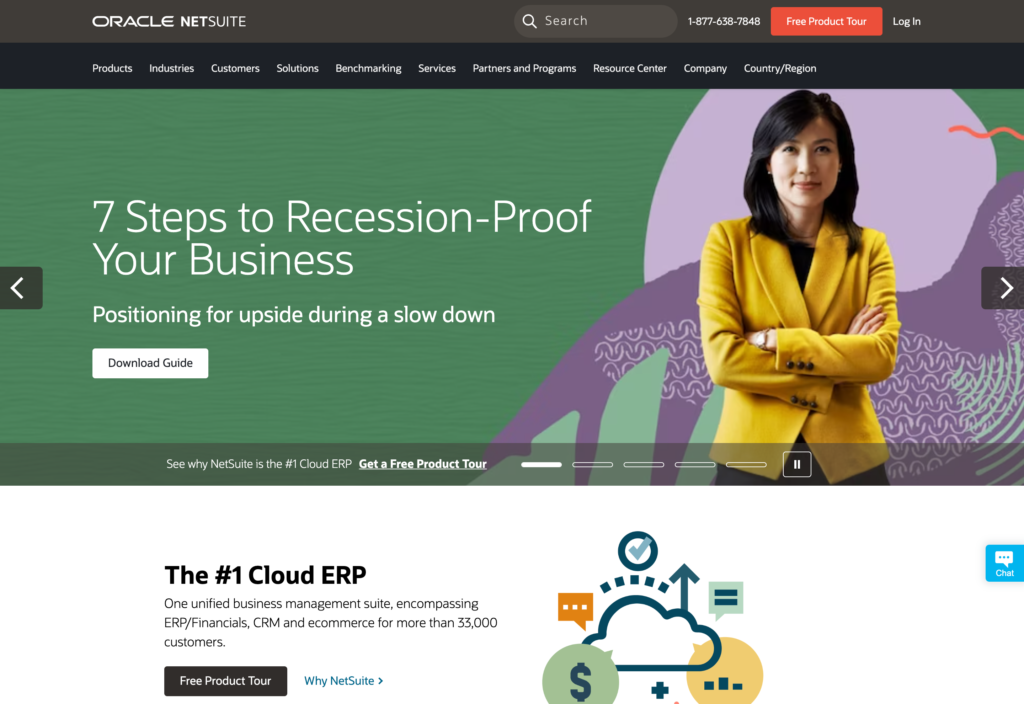
NetSuite is a cloud-based manufacturing enterprise resource planning (ERP) software that includes a full suite of tools for finance, inventory, supply chain, and manufacturing operations.
Why I chose NetSuite: It’s one of the most complete ERP platforms available for manufacturers needing deep functionality and scalability across multiple departments—not just production.
Manufacturing operations management
NetSuite’s manufacturing module goes beyond basic job tracking. It supports discrete, process, and mixed-mode manufacturing. I appreciated the ability to define detailed routing, work orders, and multi-level BOMs.
There’s also backward and forward scheduling, which helps map jobs around deadlines or available capacity.
Inventory and warehouse management
NetSuite impressed me with its real-time inventory tracking across multiple locations and warehouses. There’s support for lot tracking, bin management, cycle counting, and even mobile warehouse scanning.
I like how easily it ties inventory to financials and order fulfillment.
The downside? Inventory reporting can feel slow and clunky when you’re running large queries, and configuring warehouse rules properly takes time.
Supply chain and procurement
NetSuite offers a full supply chain toolkit—automatic reordering, vendor scorecards, approval workflows, and real-time purchase order tracking. I found the supply planning engine particularly strong. It considers demand, stock levels, lead times, and sales orders altogether.
Setup is complex and usually requires external consultants. I think it’s overkill for small manufacturers and may feel too corporate if you’re looking for a lean, simple tool.
What users say about NetSuite
The ecosystem is large enough to find support easily.
A lot of customization has to be done, which can get confusing if team members are not well trained.
Key Features
- Work orders and routing
- Real-time inventory management
- Supply chain planning
- Multi-location warehouse support
Pros
- Enterprise-grade feature set
- Scalable across multiple facilities
Cons
- Setup is long and complex
- Needs dedicated admin support
Pricing
Starts at $99/user/month Trial: No Free Plan: No
Compare the Best Manufacturing Management Softwares
| Topic |
 Start for free
Start for free
|

|

|

|

|
|---|---|---|---|---|---|
| Reviews |
4.8
|
4.5
|
4.2
|
4.2
|
4.1
|
| Pricing |
Starts at just $29/month for the first 30 users
|
Starts at $44.92/month
|
Starts at $13.50/user/month
|
Contact vendor for price
|
Starts at $99/user/month
|
| Free Trial |
yes
14-day
|
yes
30 days
|
yes
15 days
|
yes
|
no
|
| Free Plan |
yes
Free Up to 10 users
|
no
|
yes
|
no
|
no
|
| Use cases |
Best all-in-one manufacturing management software for mobile-first workforce management
|
Good for small manufacturers needing affordable MRP
|
Good for modular, open-source manufacturing solutions
|
Good for inventory and production tracking
|
Good for comprehensive ERP and manufacturing operations
|
| Available on |
Web, iOS, Android, Windows, Mac
|
Web, iOS, Android
|
What Is Manufacturing Management Software?
Manufacturing management software is one of the many examples of enterprise resource planning software, otherwise known as ERP. These digital solutions make typical manufacturing business processes more streamlined and automated. These include stock management, production planning, task management, budgeting, billing, and invoicing, to name a few.
One of the goals of manufacturing management software is to maintain quality production with the least amount of repetitive tasks. This kind of software is best suited to small-to-medium-sized manufacturing businesses.
How Does Manufacturing Management Software Work?
Many manufacturing software solutions are primarily operated by the business owner or manager via an admin dashboard on their laptops. This can either be web-based or supported through Windows or Mac.
Through this, admins are able to manage their inventory, calculate material costs, manage orders, and schedule production in an organized way. Other functions can include the ability to communicate directly with employees, track their time, schedule shifts, and manage day-to-day tasks.
On the employees’ end, they may have access to a mobile app version of the software, in which they are able to interact with upper management and other team members, fill in digital forms, and clock in and out.
The Benefits of Manufacturing Management Software
While there are many, I’ve narrowed down some of the most common benefits that come with using manufacturing management software:
- Improves product management: With manufacturing software, quality control is a lot easier to implement, improving the quality of products in the process. This kind of software usually includes features to detect manufacturing product defects and show where they occurred. This makes it easier to fix specific issues. Over time, these insights support continuous improvement by helping teams refine processes and reduce recurring errors.
- Saves time: With real-time reporting features, you can detect problems in equipment, preventing any damage or lag time along the way. Time-consuming tasks such as information dissemination and data entry are no longer required, and employees can be more efficient in their jobs.
- Speeds up production process: With manufacturing software, you can build drag-and-drop schedules and production calendars, giving you a clearer idea of production time estimates. It’s also possible to track distribution, measure stock movements, calculate costs, and more, to ensure smooth production.
- Easily oversee multiple locations: Many manufacturing organizations have more than one job site, which can be difficult to manage. With the right software, you can manage a large number of employees across sites and make cross-site manufacturing operations run smoother. It reduces back-and-forth and makes it easier to communicate information.
How Much Does Manufacturing Management Software Cost?
Manufacturing software solutions often vary in price depending on how many users need to use them and which features they include.
Some solutions on this list are on the pricier side, like NetSuite, which costs $99 per user/month, as well as a base license cost of $999 per month. However, there are also more affordable solutions, like Odoo, which starts at $7.25 per month/user.
We advise selecting a software solution that combines the widest range of features with the most affordable pricing. Connecteam is a good example. This all-in-one solution includes a basic pricing plan of just $29 for the first 30 employees.
FAQs
Manufacturers commonly rely on five main types of software to improve efficiency, quality, and coordination:
-
Enterprise Resource Planning (ERP) Software: Integrates core business processes like inventory, procurement, finance, and scheduling into one system for better decision-making.
-
Manufacturing Execution Systems (MES): Tracks and manages real-time production activities on the factory floor, helping ensure operations run efficiently and meet quality standards.
-
Computer-Aided Design (CAD) Software: Used to create detailed 2D and 3D designs of products, parts, and manufacturing tools, essential for prototyping and production planning.
-
Product Lifecycle Management (PLM) Software: Manages every stage of a product’s life—from initial concept to production and maintenance—improving collaboration and reducing errors.
-
Supply Chain Management (SCM) Software: Helps coordinate and optimize the flow of materials, information, and finances across the entire supply chain, from raw materials to finished goods.
Each type of software plays a crucial role in modern manufacturing operations.
The Bottom Line On Manufacturing Management Software
Manufacturing software solutions are revolutionizing the manufacturing industry, driving massive gains in efficiency, quality, and output. Whether you’re launching a new manufacturing operation or modernizing an established one, having the right digital tools in place is essential.
From time tracking and job scheduling to shop floor management, communication, reporting, and more, manufacturing management software can take your business to the next level. Among all the options available, Connecteam stands out as the best all-in-one solution for manufacturers looking to streamline their operations, improve workforce management, and boost production—all without breaking the bank.
If you’re ready to organize your production floor, manage teams more efficiently, and grow your business with confidence, Connecteam is the way to go.





